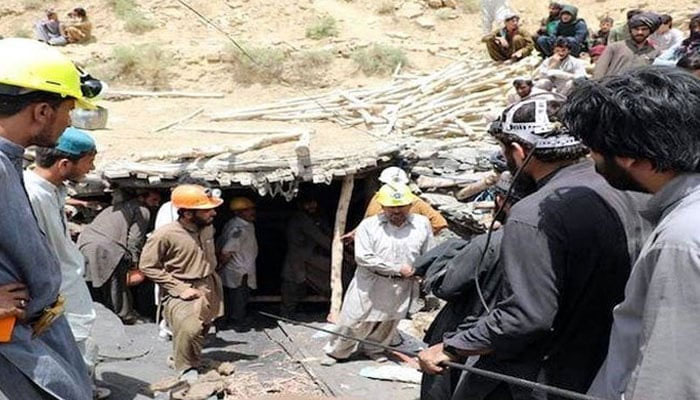Health
ENVIRONMENT: TO BREATHE OR NOT TO BREATHE?
字号+ Author:Smart News Source:Business 2025-01-15 08:21:52 I want to comment(0)
The onset of smog season in October results in a decline in air quality across Punjab, on either side of the Pakistan-India border. Lahore and Delhi are traditionally the worst affected, with the Pakistani city recording “unprecedented” pollution levels. The air quality index, which measures a range of pollutants, exceeded 1,000 in Lahore last week — it is considered “unhealthy” at the level of 100 and “hazardous” when it is 300 or more — according to data from IQAir, an air quality monitor. The situation, in Lahore and elsewhere in Pakistan’s Punjab, is being made worse by the political and policy inertia of the Punjab government. Every year, there are multiple studies and reports published on the subject and policy dialogues are convened to add to the public discourse. Despite these efforts, one question looms large: why, despite having ample scientific data and understanding of pollution patterns, has the government failed to take decisive action? Despite having ample data and understanding of pollution patterns, Punjab has failed to take policy decisions to combat the year-round smog problem, thereby subjecting its residents to “hazardous” levels of pollution in winter… The answer lies not in a lack of awareness, but in a deeply rooted knowledge-action gap, where the presence of scientific knowledge fails to translate into policy change, because of political and institutional barriers. Over the past decade, environmental scientists, both locally and globally, have made substantial progress in identifying the root causes of air pollution. Detailed data have mapped out the major culprits: industrial emissions, agricultural stubble burning, vehicular emissions and construction dust. Seasonal spikes, most notably in winter, occur due to temperature inversions, trapping pollutants close to the ground and amplifying smog. Similarly, there have been several studies on the socio-economic impacts of smog, especially related to deteriorating public health. Yet, despite having this data readily available and witnessing the devastating health and economic impacts of air pollution, policy responses remain fragmented, inconsistent and slow. One might assume that simply knowing the causes of pollution would lead to swift action, but the science-policy relationship is rarely straightforward. Despite clear scientific evidence of the problem, decision-makers are caught between competing interests, fragmented responsibilities, and the political weight of environmental regulations on influential sectors. For instance, while it is well-known that stubble-burning contributes significantly to smog, attempts to curb this practice have been largely ineffective. Farmers, already struggling with limited financial resources, view alternatives — such as crop residue shredders — as too costly, even with government subsidies, and continue with stubble-burning every year. Over in the industrial sector, rather than enforcing stricter regulations or increasing support for alternatives, policymakers have often resorted to temporary shutdowns of industrial sites or limited brick kiln operations. Such actions fail to address the core issues and provide only brief respites from poor air quality. Temporary shutdowns only reduce emissions momentarily and do not tackle the long-term pollution generated daily by factories and kilns. Addressing these issues would require establishing enforceable, year-round standards, incentivising cleaner technologies and alternative fuels, and ensuring a robust system for regular inspections and penalties for non-compliance. A core reason for inaction lies in the political and economic stakes tied to air pollution and misplaced priorities. Punjab’s industrial sector, one of the primary contributors to pollution, is also a major economic driver. Implementing stringent regulations could slow down production, impact profits and even lead to job losses. Similarly, agricultural practices such as stubble-burning are deeply entrenched, and sudden changes could lead to significant disruptions in an already strained agricultural economy. Even though these sectors have been identified as critical polluters, the government is reluctant to pursue measures that could be politically costly. As far as the issue of misplaced priorities is concerned, a case in point is the development model of Lahore, which has relied on road infrastructure projects with the aim to ease traffic congestion in the city. This has resulted in the construction of signal-free corridors across the city. This also means that, during the construction phase of these projects, the cement and dust particles are likely to remain suspended in the air, contributing to the bad air quality. Consequently, there is an incentive for citizens of the city to use private transport which, as a result of these corridors, will be much quicker for daily commutes than public transport. The entire development model of Lahore incentivises more vehicles on roads, rather than focusing on a public transport policy that doesn’t incentivise use of private transport and vehicles. With the recent passage of the 26th Amendment, the constitution of Pakistan now enshrines the “Right to a Clean and Healthy Environment” under Article 9A. This amendment mandates the government to protect citizens from environmental harm, making it incumbent on the state to address the severe air quality crisis. Now that the evidence unequivocally shows air quality levels have reached hazardous levels, the government’s responsibility to act is more pressing than ever. To put it simply, government action against the smog crisis is a public health imperative. What Punjab needs now is not more data, but a concerted, integrated approach that prioritises public health over short-term, knee-jerk, gimmick-oriented solutions, such as using mist machines on the streets of Lahore. Much of the data points to automobiles as a major contributor of emissions and pollution. There is existing regulation on shifting to cleaner Euro-V fuels across the country, but that is only part of the solution. The preponderance of old vehicles with inefficient engines is equally responsible for emissions, which is why the automobile legislation should focus on an effective motor vehicle-testing regime and a plan to phase out old/polluting vehicles. Additionally, there should be a focus on public transport legislation, whereby incentives are provided to citizens and organisations to take up public over private transport. This was also among the recommendations of a recent policy report published by the World Wide Fund for Nature Pakistan (WWF-Pakistan), titled Situational Analysis of Air Quality in Lahore. Among other things, the report lays emphasis on the need for an efficient mass transit system. It says that expanding Lahore’s mass transit options can mitigate vehicular pollution. Lahore’s Metro Bus and Orange Line Metro Train have been effective, but further development of affordable, efficient mass transit across the city would encourage public use, thus reducing private vehicle reliance and emissions over the long term. Such a developmental project also makes political sense and is in line with the political parties’ emphasis on large-scale infrastructure projects that are tangible signs of ‘development’ and progress. There is a need to influence policy and decision-making to consider environmental factors as part of the planning process. Lahore, and Pakistan as a country on the whole, requires a solid, integrated green and sustainable plan for urban expansion. Presently, cities grow and central business districts develop without proper zoning strategies and without keeping in mind the environmental footprint of such development. Each year, the cost of inaction becomes more apparent. The time has come to bridge this knowledge-action gap by implementing policies that reflect both scientific insight and on-the-ground realities of Punjab’s social and economic landscape. If the government can move beyond the political inertia that has paralysed efforts thus far, there is hope that Punjab’s air can one day be breathable again.
1.This site adheres to industry standards, and any reposted articles will clearly indicate the author and source;
 Related Articles
Related Articles-
Saudi Riyal to PKR Rate Today in Pakistan – 7 December 2024
2025-01-15 08:18
-
Human Metapneumovirus present in Pakistan since 2001: NIH
2025-01-15 07:33
-
Human Metapneumovirus present in Pakistan since 2001: NIH
2025-01-15 07:28
-
Human Metapneumovirus present in Pakistan since 2001: NIH
2025-01-15 05:54
 User Reviews
User Reviews Recommended Reads
Recommended Reads Hot Information
Hot Information- Pakistanis seeking European Visas warned of Fake EU Embassy entries; details inside
- Human Metapneumovirus present in Pakistan since 2001: NIH
- Human Metapneumovirus present in Pakistan since 2001: NIH
- Human Metapneumovirus present in Pakistan since 2001: NIH
- Woman poisons three buffaloes, one cow after fight with husband in Faisalabad
- Human Metapneumovirus present in Pakistan since 2001: NIH
- Human Metapneumovirus present in Pakistan since 2001: NIH
- Human Metapneumovirus present in Pakistan since 2001: NIH
- 25pc Salary Increment, allowances planned for Govt employees despite fiscal deficit
 Abont US
Abont US
Follow our WhatasApp account to stay updated with the latest exciting content













